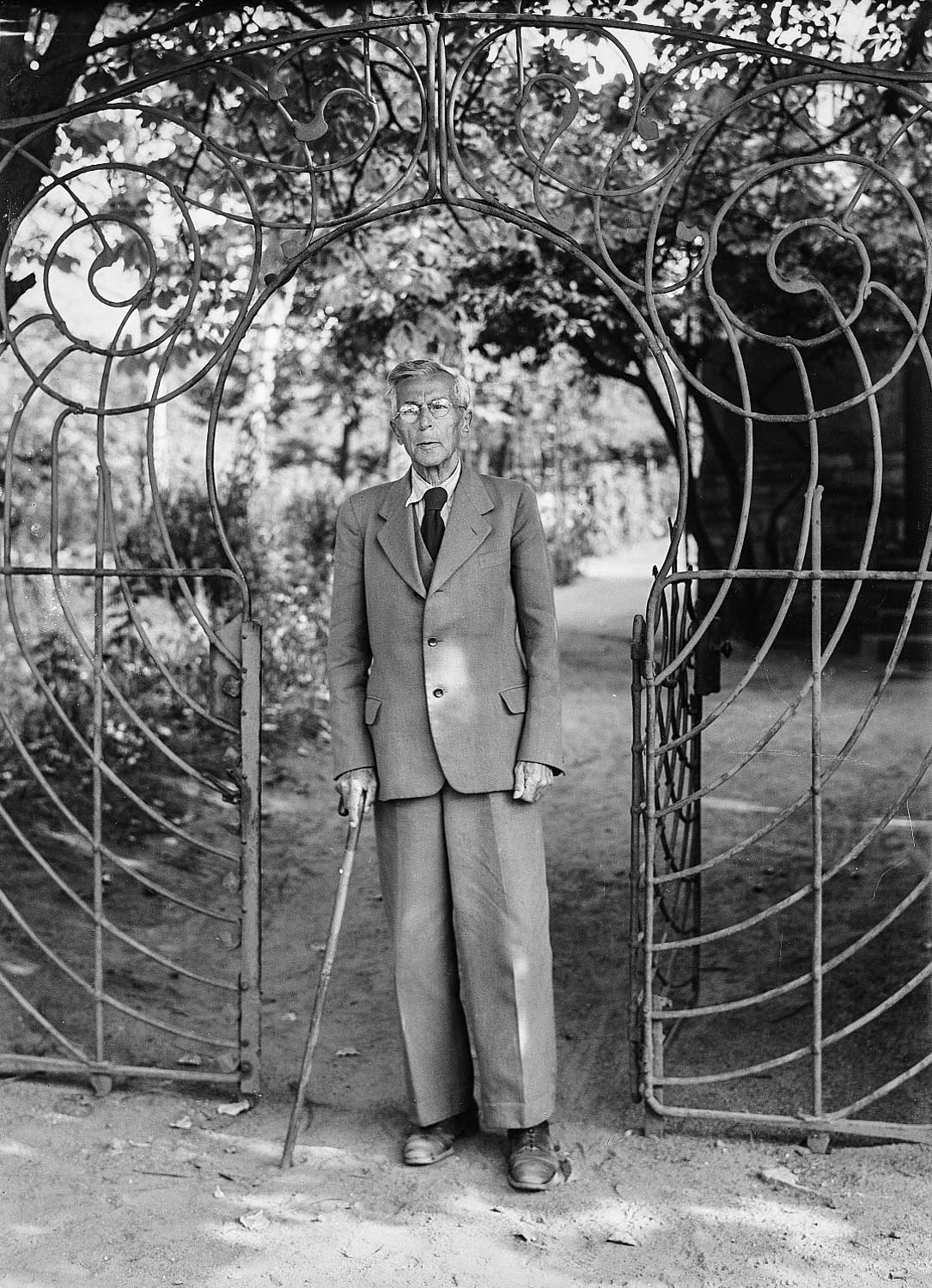Karl Schmidt
The foundation stones were laid for the new Deutsche Werkstätten (German Workshops) company building and a garden city based on the English model in Hellerau near Dresden in 1908/09. Neither would have been possible without the progressive entrepreneur and reformer Karl Schmidt. Born in Zschopau, he brought groundbreaking ideas from his years of travelling through Europe to Dresden and looked for ways to bring them to life in a network of like-minded people. Better housing, the renewal of crafts, education, the social aspects of living together and the preservation of natural resources became his life’s work. Carl Camillo Schmidt, born in Zschopau in 1875, died in 1948 after a life full of innovations and ideas in Hellerau, which would probably not have existed without his initiative.

Karl Schmidt-Hellerau, the founder of the Deutsche Werkstätten (Hellerau Workshops), the Garden City Hellerau and the Werkbund (German Association of Craftsmen), in front of his garden, 1948.
© SLUB / Deutsche Fotothek / Walter Möbius.
Networks in the new era
The founder of the Deutschen Werkstätten (German Workshops) Karl Schmidt, who came from a poor background, was a friend of the politician Friedrich Naumann and firmly believed in his social reform ideas. Other close companions were the architect Hermann Muthesius and the painter, designer, and his later brother-in-law Richard Riemerschmid. Wolf Dohrn joined the group in 1907, on Naumann’s recommendation, and became the driving force behind the Festspielhaus (Festival Theatre) project. He initially entered Schmidt’s service as general secretary and moved to the newly founded Werkbund (Association of Craftsmen) in the same year. Karl Schmidt was also a tireless supporter here. He and the Deutsche Werkstätten (German Workshops) were among the founding members of this important institution. Important designers of the time joined the ranks of his company’s designers over time: in addition to Richard Riemerschmid and Hermann Muthesius, these included Joseph Maria Olbrich, Mackay Baillie Scott and Charles Rennie Mackintosh, Heinrich Tessenow, Peter Behrends, Bruno Paul, Karl Bertsch and also women such as Gertrud Kleinhempel and Margarete Junge.
Karl Schmidt and the garden city
When the carpenter and entrepreneur Karl Schmidt had economic success with the Deutsche Werkstätten (German Workshops), he started looking for land for his own company building. At the same time, he wanted a healthy place for his workers and employees to live. A garden city based on the ideas of the Englishman Ebenezer Howard was the solution for him. He found the building site for both in the Klotzsche/Rähnitz area near Dresden, on what was known as the Heller. He initially bought the entire site and handed over a large part of it to the newly founded Gartenstadt-Hellerau-Gesellschaft (Hellerau Garden City Society), even though Schmidt had to finance the purchase himself. Cooperative management was very important to the entrepreneur, but he always emphasised that entrepreneurial considerations were the starting point for such action.
Where there’s a will, there’s a way – Schmidt’s innovations
Karl Schmidt wrote this saying in an early notebook. He followed a clear order in everything he did: see, evaluate, focus, act. He took a similar approach to innovations, of which the Deutsche Werkstätten (German Workshops) had many to offer. Most of them came directly from Schmidt or were at least supervised or inspired by him. Along the way, the company became a place of inventions and new beginnings at all levels. After attending the Erste Kunsterziehungstag (First Art Education Day) in Dresden in 1901, he founded a company to manufacture progressive toys. He changed the contracts with the designers to profit-sharing. He employed an above-average number of women as designers. He invented wood core plywood and, together with Richard Riemerschmid, machine-made furniture in large-scale production. He held many patents, created a home for the Lebensreform (life-reform) movement and corresponded about it with the whole world. Thanks to Karl Schmidt, Hellerau became a centre of modernism.
